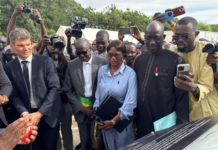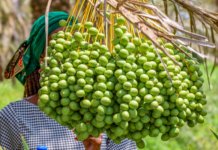Zimbabwe’s tobacco production has hit 207m kg earlier on this week. This, according to Tobacco and Industry Marketing Board, is by far the highest volume produced in post land reform. The board goes on to confirm that tobacco sales went up 29% from 161m kg. Moreover, the total crop value of the crop also increased to US $605.8m. This is approximately 30% increase from last year’s US $470m.
Currently, Zimbabwe holds 4th place among world’ tobacco producer of flu cured tobacco. According to Zimbabwe Tobacco Association CEO Mr Rodney Ambrose, last year’s output nearly hit 180m kg. This is considering the country had set targets of 200m kg for this year. He further added that they are projecting a further increase in kg to between 220 and 250m. This, he says, is in anticipation of extension of contract sales till September of this year.
However, Mr. Ambrose noted that the sales through the auction system have slowed. Prior to the land reform program, tobacco farming was a preserve of large scale commercial farmers, few of whom were blacks.
Initially, approximately 2 000 large scale commercial farmers would produce 200m kilograms. This was during the period leading to the land reforms, with an average of 200 tonnes per farmer. On the other hand, the land reforms have seen the number of farmers increase to about 100 000. This represents a clear transfer of wealth from the elitist large scale farmers to a broader grower base constituting ordinary Zimbabweans.
This has resulted in the economic transformation of rural communities owing to the good profits farmers are enjoying after selling their crop.
During the period under review, about 30.5m kilograms were sold under the auction system while 85.1m kg was sold under contract at an average price of US $2,91 per kg.







